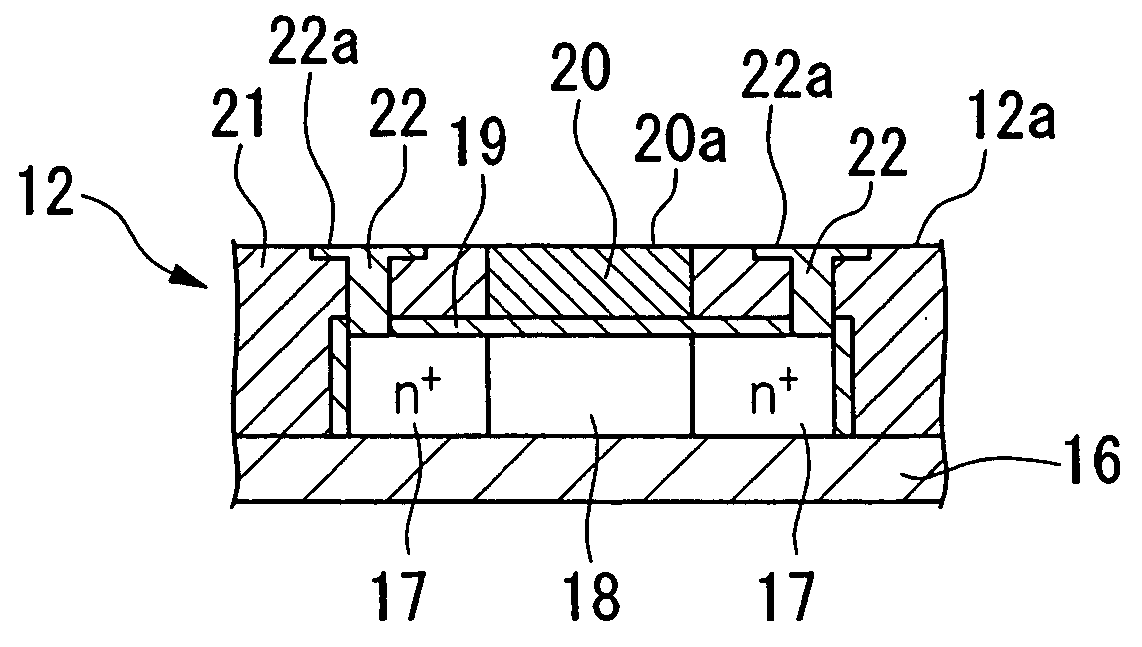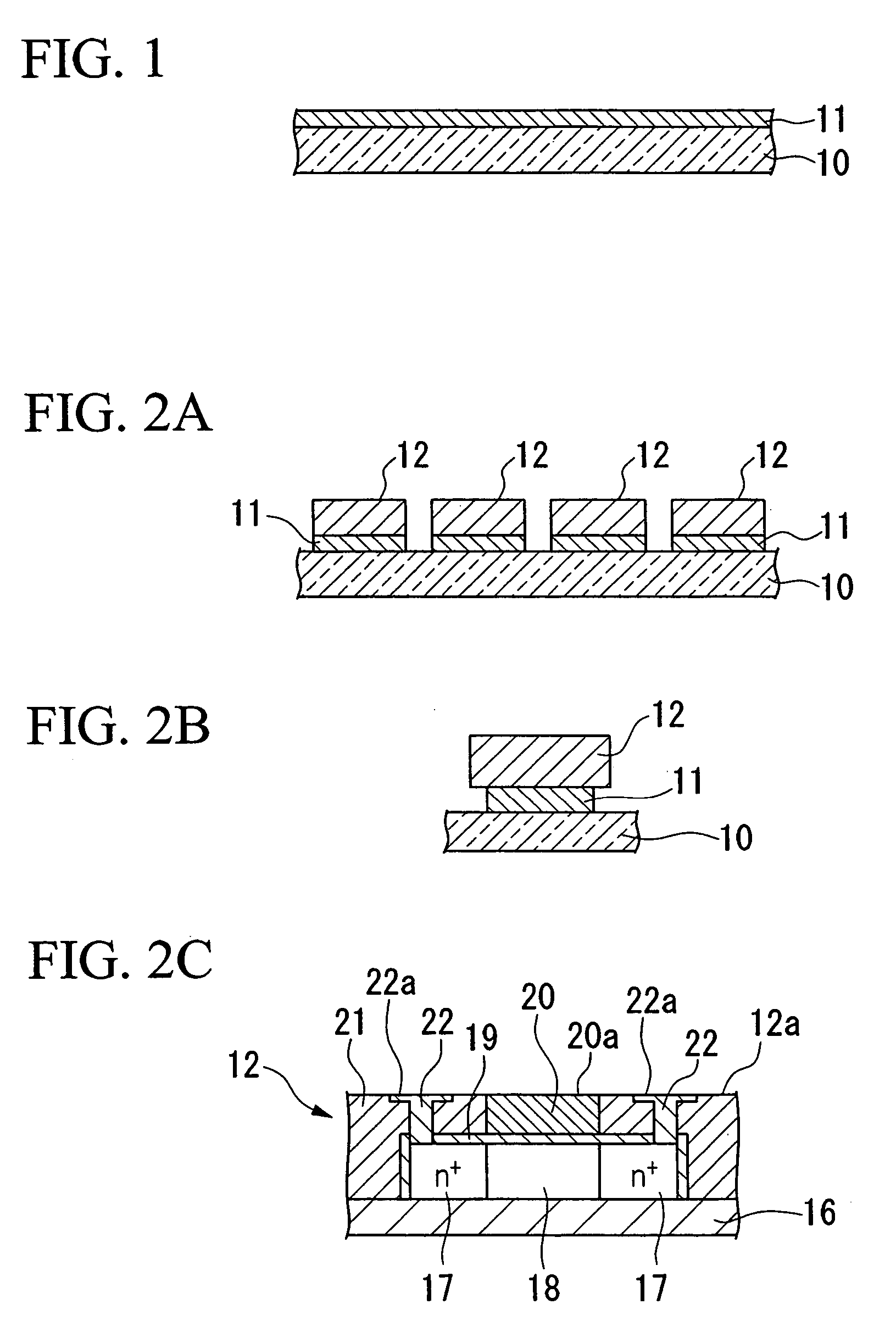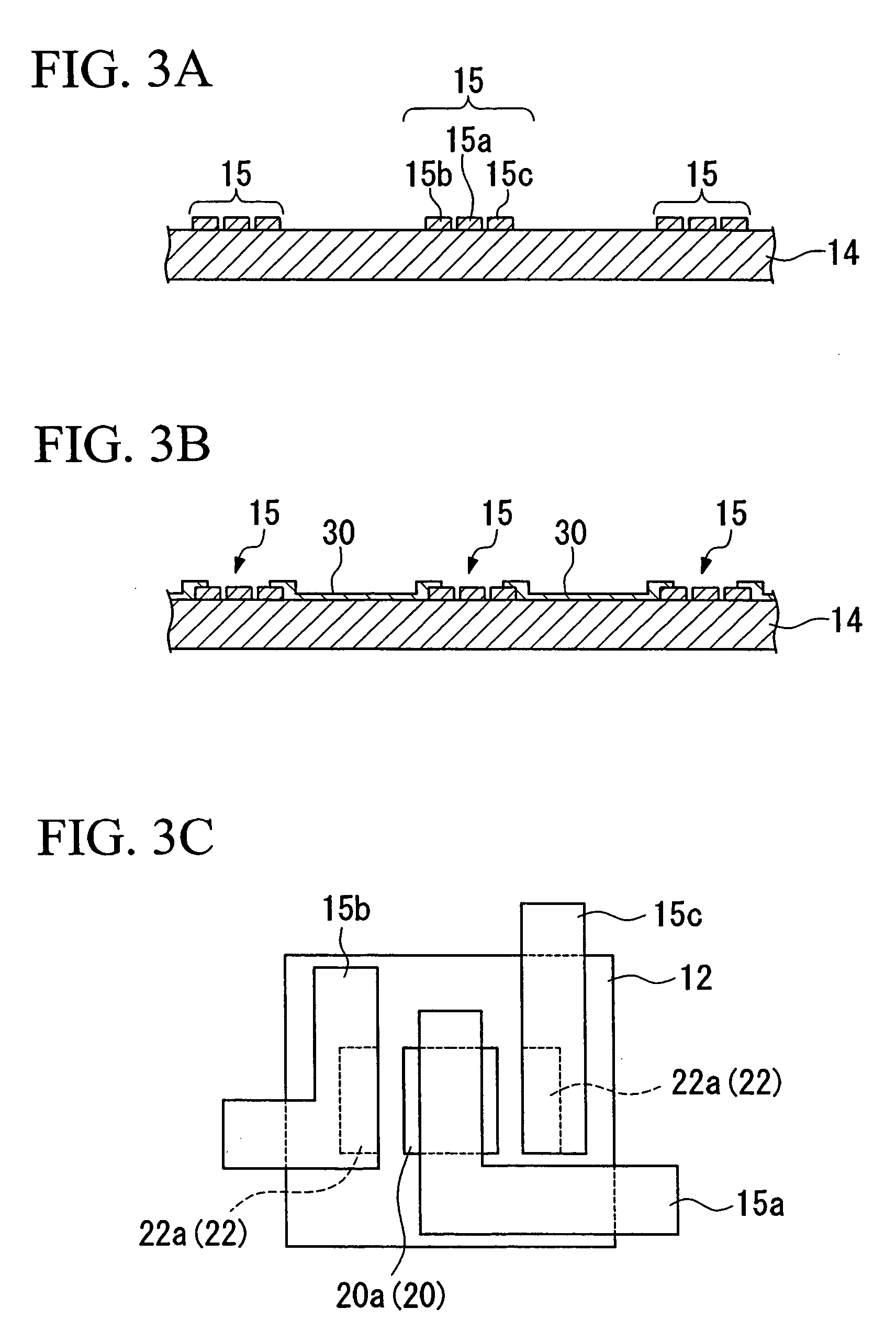Device manufacturing method and device, electro-optic device, and electronic equipment
a manufacturing method and device technology, applied in the direction of optics, transistors, instruments, etc., can solve the problems of low effective area utilization ratio of transistor circuits on the substrate of liquid crystal electro-optic devices, high manufacturing cost per unit area, and high cost. , to achieve the effect of low cost, effective manufacturing, and increased product yield ra
- Summary
- Abstract
- Description
- Claims
- Application Information
AI Technical Summary
Benefits of technology
Problems solved by technology
Method used
Image
Examples
first embodiment
[0083]FIG. 1 to FIG. 7 are explanatory drawings of a first embodiment of the present invention (element transfer method). This element transfer method is an example of where an anisotropic conductive adhesive film is specifically used as a conductive adhesive, and is executed through the following first process to fourth process.
[0084] [First Process]
[0085] In the first process, as shown in FIG. 1, a separation layer 11 is formed on an original substrate 10, and furthermore, as shown in FIG. 2A, many elements 12 are formed on the separation layer 11.
[0086] The original substrate 10 in the present embodiment, is a substrate for element forming. Such an element forming substrate is preferably one having transmittance that allows transmission of light.
[0087] In this case, the transmissivity of light is preferably more than 10%, and more preferably more than 50%. If the transmissivity is too low, the loss of light becomes large, and a larger quantity of light is required in order to ...
second embodiment
[0168] The difference of the second embodiment to the first embodiment is the point that anisotropic conductive adhesive in paste form, that is, in liquid form, is used as the conductive adhesive, instead of the film-like anisotropic conductive adhesive.
[0169] In this embodiment, the final substrate 14 shown in FIG. 3B formed with the wiring 30 for connecting to the electrode pads 15a, 15b, 15c is prepared, and liquid form anisotropic conductive adhesive 32 as shown in FIG. 10 is applied on this over the whole surface by spin coating.
[0170] The liquid form (paste form) anisotropic conductive adhesive 32 is not specifically limited, and various kinds can be used. Examples suitable for use include “3370G” made by Three Bond Co., Ltd. This anisotropic conductive adhesive 32, as with the film-like anisotropic conductive adhesive 32, is also formed by dispersing fine conductive particles in an insulative paste, and it is constituted so as to be cured by heat pressing.
[0171] After whol...
third embodiment
[0175] The difference of the third embodiment to the second embodiment is the point that the liquid form anisotropic conductive adhesive 32 is selectively arranged by a liquid droplet discharge method such as an inkjet method, a dispenser method, or the like, instead of whole surface application by spin coating.
[0176] In this embodiment, the final substrate 14 shown in FIG. 3B formed with the wiring 30 for connecting to the electrode pads 15a, 15b and 15c may be used. However, as shown in FIG. 11, the final substrate 14 formed with only the electrode pads 15a, 15b and 15c before forming the wiring 30 may also be used.
[0177] In the case where the final substrate formed with the only the electrode pads 15a, 15b and 15c is used, the anisotropic conductive adhesive 32 being in liquid form is discharged from a droplet discharge section, for example, an inkjet head H, so as not to cover the whole surface of these electrode pads 15a, 15b and 15c. Discharge of the anisotropic conductive a...
PUM
| Property | Measurement | Unit |
|---|---|---|
| temperature | aaaaa | aaaaa |
| thickness | aaaaa | aaaaa |
| thickness | aaaaa | aaaaa |
Abstract
Description
Claims
Application Information
 Login to View More
Login to View More - R&D
- Intellectual Property
- Life Sciences
- Materials
- Tech Scout
- Unparalleled Data Quality
- Higher Quality Content
- 60% Fewer Hallucinations
Browse by: Latest US Patents, China's latest patents, Technical Efficacy Thesaurus, Application Domain, Technology Topic, Popular Technical Reports.
© 2025 PatSnap. All rights reserved.Legal|Privacy policy|Modern Slavery Act Transparency Statement|Sitemap|About US| Contact US: help@patsnap.com



